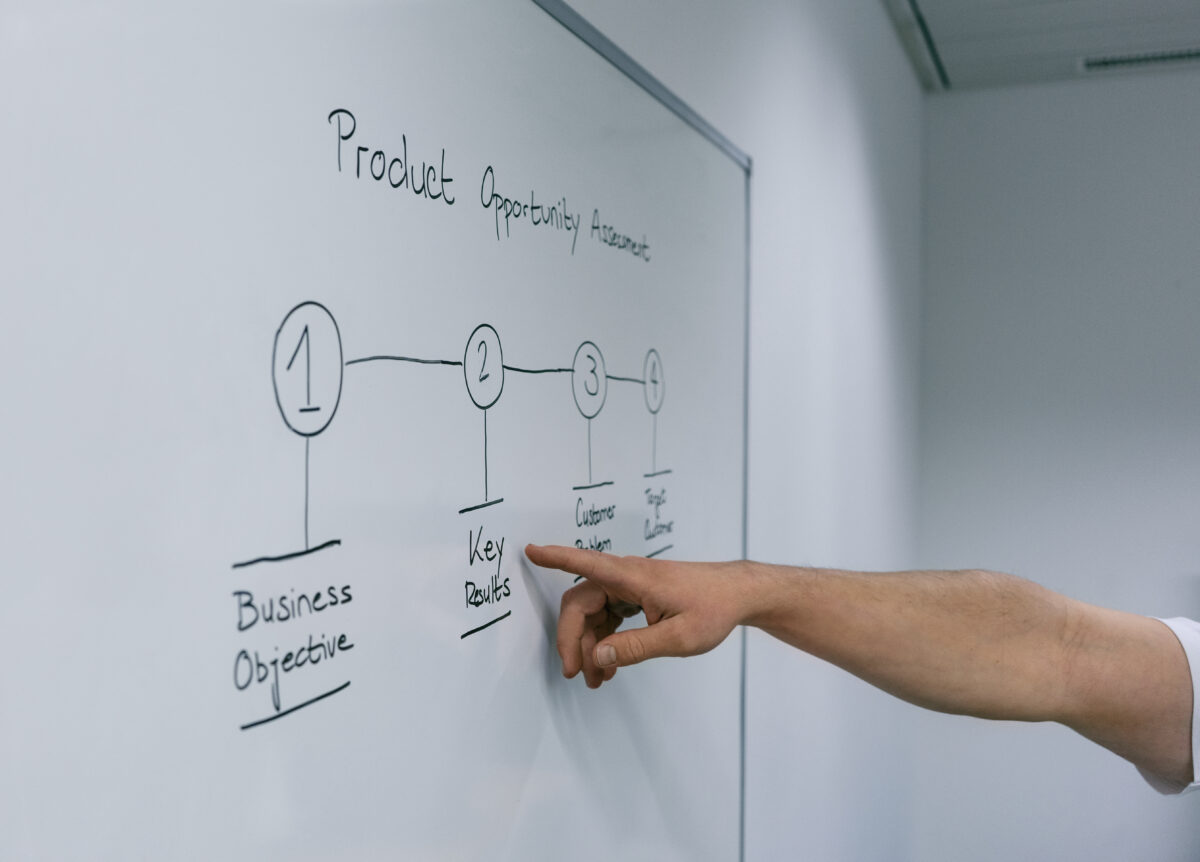When it comes to product discovery and figuring out what products to build, there are a set of techniques we apply.
The first step of the product discovery phase is to frame it. A simple discovery framing technique that saves you time and money by avoiding weak opportunities is the Product Opportunity Assessment. For opportunities that turn out to be lucrative, this technique helps to clearly determine what is required in order for implementation to be successful.
The Product Opportunity Assessment also ensures alignment and clarity of purpose among the team and other stakeholders.
The Product Opportunity Assessment addresses 4 key questions about the project you’re about to undertake:
- What business objective does the solution intend to address? (Business Objective)
- How do we measure the success of the project? (Key Results)
- What problem will we solve for the customer? (Customer Problem)
- For whom do we solve that problem? (Target Customer)
Business Objective
To start the conversation, ask yourself or your team: Why are we doing this project? This discussion can take anywhere from 1 minute to multiple days. There’s a risk of skipping this question because you assume the objective for a new project is clear for everyone. However, it’s crucial to have this discussion to ensure all stakeholders are on the same page regarding the overarching goal.
The business goal is usually of a qualitative nature. It should be ambitious and aggressive, yet realistic. Thus, it should inspire and set the direction.
For example, a business objective could be to grow the customer base, or to improve the customer experience.
Key Results
At the start of each product discovery phase, we want to know the exact measure of success. For example, if the business objective is to improve the customer experience, a possible key result is to reduce the average customer onboarding time to under 3 minutes.
A key result should be a measurable outcome, consisting of a metric with a target value. When reached, it moves the company closer to a business objective.
Customer Problem
While the first two questions address the company’s goals and how an initiative benefits the company, we want to focus on the customer in the second step. We must identify the problem that customers are facing so we can attempt to solve it. A problem can come from using the current solution, a competitor’s solution, or exist because there is no adequate solution on the market yet.
The question about the customer problem is usually the hardest to answer, which surprises people because it sounds like the easiest. However, when you ask startup founders or product managers what problem their product intends to solve for customers, often all you get is a list of features.
A possible problem could be that it takes a company a lot of time to pay all its remote workers with a contractual agreement and maintain a clear overview of these payments.
Target Customer
The question „For whom do we solve that problem?“ intends to define the target customer who will benefit from the solution to a problem. A commonly used tool to determine the target customer is the creation of user personas.
Often the initial target group is too large. Whenever the target group is everyone, it’s necessary to narrow your niche. A product created for everyone serves no one. Niching down is especially essential for startups. Underserved sub-niches tend to have less competition, as large brands consider the smaller markets not worth targeting.
A possible target customer could be a front desk employee at a 4-star hotel in Switzerland. If you want to niche it down further, you could consider only hotels in ski resorts.
Focus on the objective and the problem
Depending on the project, there are other factors to consider. However, these are the bare minimum questions we address when starting the product discovery phase. As you can see, the purpose of a Product Opportunity Assessment is to identify the business objective and the customer problem, not the solution.
The result of the Product Opportunity Assessment will be discussed with the client or senior management. It will then be used to make a go or no-go decision to proceed with the project.
A Product Opportunity Assessment will inform you what you’re getting yourself into and what it will take to succeed if the project goes ahead. We also ensure that all team members know the answers to these questions before jumping into the product discovery phase.
